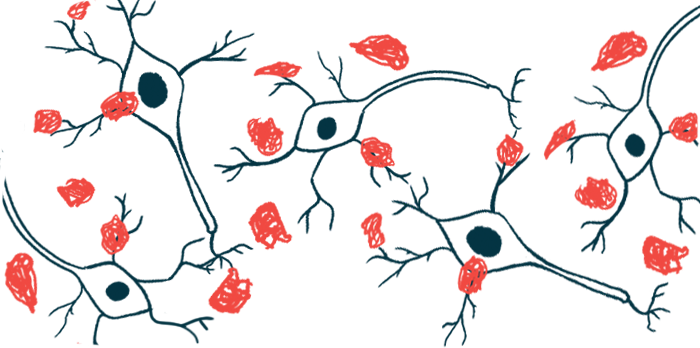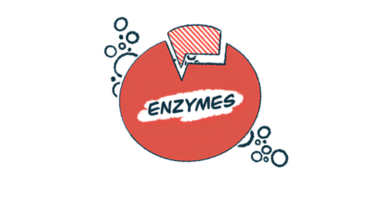Increasing zinc transporter may be Parkinson’s therapeutic target
Elevating ZIP7 protein in fruit flies reduced ER stress, raised cell mobility

Enhancing mechanisms associated with the degradation of misfolded proteins at the proteasome, that is, cellular structures where these proteins are degraded, may be a new therapeutic target for neurodegenerative diseases, including Parkinson’s disease.
That’s according to a new study in fruit flies, where researchers found that the ZIP7 protein, a zinc transporter, was essential for proteasome functioning.
When the protein’s levels were increased in a fruit fly model of an eye neurodegenerative disease, misfolded proteins were prevented from accumulating by enhancing proteasome activity, thwarting eye neurodegeneration and blindness.
“By studying basic cell biology in fruit fly ovaries, we stumbled upon a way to prevent neurodegeneration, and we think this has potential applications in the treatment of some human diseases,” Denise Montell, a professor at the University of California, Santa Barbara and senior author of the study, said in a university news release.
The study, “The Zn2+ transporter ZIP7 enhances endoplasmic-reticulum-associated protein degradation and prevents neurodegeneration in Drosophila,” was published in Developmental Cell.
Neurodegenerative diseases, such as Parkinson’s and Alzheimer’s disease, are marked by misfolded proteins accumulating into toxic clumps, which is thought to contribute to nerve cell death.
Role of zinc transporter ZIP7 in proteasome function
Misfolded proteins are also present in healthy cells, which have a quality control system to deal with them. If the protein damage can’t be corrected, the cell tags the misfolded protein with a small molecule called ubiquitin for recycling at the endoplasmic reticulum (ER), This mechanism is called ER-associated protein degradation (ERAD).
The ER is a cellular structure involved in protein production, folding, and transport. From there, the proteasome, a cellular “garbage disposal” that helps keep the cell clean and functioning properly, “literally chews up the protein into little pieces that can then be recycled,” Montell said.
However, if the production of misfolded proteins overwhelms the cell’s adaptive response, it causes ER stress that slows down protein production, which can lead to cell death.
“Thus, strategies to enhance ERAD may be useful in treating multiple degenerative diseases,” in which “toxic protein aggregates have been proposed to kill neurons by inhibiting ERAD,” the researchers wrote.
To better understand how these mechanisms are regulated, researchers studied cells in fruit fly (Drosophila melanogaster) ovaries. Using this model, they identified the ZIP7 gene, which encodes a protein of the same name, as being important for cell mobility.
The ZIP7 protein transports zinc ions within a cell. These ions are abundant in proteins and often form part of the protein’s structure and allow it to perform its function.
The researchers observed that the loss of ZIP7 caused ER stress in fruit fly ovaries, impairing cellular movement. When ZIP7 was increased, ER stress was reduced and cell mobility recovered.
“If this was real, just ZIP7 alone must be very potent in resolving ER stress,” said Xiaoran Guo, the co-lead author of the study.
The researchers also discovered that ZIP7-mediated zinc transport was involved in removing the ubiquitin tag from misfolded proteins so they could fit into the proteasome for degradation. This process is catalyzed by the Rpn11 enzyme and zinc is essential for its function.
“I was very surprised, and then excited, when I saw that increasing ZIP7 expression almost completely prevented the buildup of those ubiquitin-tagged proteins,” said Morgan Mutch, the other co-lead author.
A new therapeutic target?
The results suggest that increasing ZIP7 could be the basis for a new treatment strategy for neurodegenerative diseases. For instance, the human congenital blinding disease retinitis pigmentosa, which is marked by the degeneration of the retina and loss of vision, is caused by the accumulation of misfolded rhodopsin. The retina is the light-sensitive nerve tissue in the back of the eye that receives images and sends them to the brain through the optic nerve. Rhodopsin is a protein in retinal cells that transforms light into electric signals that can be interpreted by the brain, enabling vision.
Using a fruit fly model of the disease, the researchers found that increasing ZIP7 levels prevented retinal degeneration and blindness.
While all the flies with mutant rhodopsin usually developed retinitis pigmentosa, 65% of those with increased ZIP7 formed eyes that responded normally to light.
Because proteasome function declines with age and contributes to an increased probability of developing neurodegenerative diseases, targeting ZIP7 may help slow these conditions’ development or progression, the researchers said.







